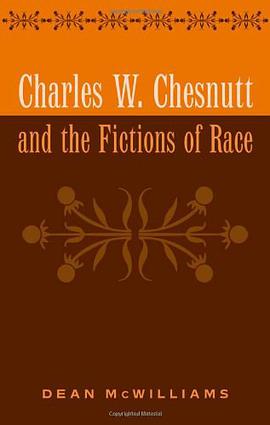
The book, a documentary history, records a cognitive history of the emergence of modern architecture. Cutting across disciplinarian and institutional divisions as we know them today, it reconstructs developments within the framework of a cognitive history of the past. Modern is here taken to mean the radical re-thinking of architecture from the end of the tenth century in Europe to the end of the eighteenth century. Among the key debates that mark the period are those that oppose tradition to innovation, canon to discovery, geometrical formality to natural picturesqueness, the functional to the hedonistic. These conceptual changes are interwoven with institutional transformations which are also recorded here: the gradual separation of the architect from the ranks of the craftsperson, the increasing division between the professional categories we recognize today: architect, landscape architect, engineer and urban planner, the struggle of the designer to secure a position as an autonomous specialist, an intellectual, a free and critical commentator upon the state of human affairs. The hypothesis here is that by the end of the eighteenth century, when this documentary history ends, the conceptual, professional and educational structures for the practice and propagation of modern architecture are in place. The foundations of architectural thinking emerge essentially as they still are today.
具体描述
读后感
评分
评分
评分
评分
用户评价
两位作者通过广泛的文献梳理与分析对比,借鉴科学革命和商业革命的分期,将现代建筑的浮现时间推至中世纪末期或文艺复兴早期(1000年至1850s),批判了吉迪恩、佩夫斯纳等人带有技术偏见的历史观,提出将现代建筑看做一种平行存在、广泛衍发的共同革命,同时拒绝黑格尔式的进步论调,认为现代建筑近似自然进化的结果,具有特殊的时代耦合性。作者对现代建筑作为一种设计方法并未直接批判,而是将其转化为“批判区域主义”下的新建筑理论的一部分,这种区域主义体现出较强“现代主义-后现代主义”之间的折中性质。/图版精美/作者挑选文献的标准是什么?反应什么观点或倾向?
评分两位作者通过广泛的文献梳理与分析对比,借鉴科学革命和商业革命的分期,将现代建筑的浮现时间推至中世纪末期或文艺复兴早期(1000年至1850s),批判了吉迪恩、佩夫斯纳等人带有技术偏见的历史观,提出将现代建筑看做一种平行存在、广泛衍发的共同革命,同时拒绝黑格尔式的进步论调,认为现代建筑近似自然进化的结果,具有特殊的时代耦合性。作者对现代建筑作为一种设计方法并未直接批判,而是将其转化为“批判区域主义”下的新建筑理论的一部分,这种区域主义体现出较强“现代主义-后现代主义”之间的折中性质。/图版精美/作者挑选文献的标准是什么?反应什么观点或倾向?
评分两位作者通过广泛的文献梳理与分析对比,借鉴科学革命和商业革命的分期,将现代建筑的浮现时间推至中世纪末期或文艺复兴早期(1000年至1850s),批判了吉迪恩、佩夫斯纳等人带有技术偏见的历史观,提出将现代建筑看做一种平行存在、广泛衍发的共同革命,同时拒绝黑格尔式的进步论调,认为现代建筑近似自然进化的结果,具有特殊的时代耦合性。作者对现代建筑作为一种设计方法并未直接批判,而是将其转化为“批判区域主义”下的新建筑理论的一部分,这种区域主义体现出较强“现代主义-后现代主义”之间的折中性质。/图版精美/作者挑选文献的标准是什么?反应什么观点或倾向?
评分两位作者通过广泛的文献梳理与分析对比,借鉴科学革命和商业革命的分期,将现代建筑的浮现时间推至中世纪末期或文艺复兴早期(1000年至1850s),批判了吉迪恩、佩夫斯纳等人带有技术偏见的历史观,提出将现代建筑看做一种平行存在、广泛衍发的共同革命,同时拒绝黑格尔式的进步论调,认为现代建筑近似自然进化的结果,具有特殊的时代耦合性。作者对现代建筑作为一种设计方法并未直接批判,而是将其转化为“批判区域主义”下的新建筑理论的一部分,这种区域主义体现出较强“现代主义-后现代主义”之间的折中性质。/图版精美/作者挑选文献的标准是什么?反应什么观点或倾向?
评分两位作者通过广泛的文献梳理与分析对比,借鉴科学革命和商业革命的分期,将现代建筑的浮现时间推至中世纪末期或文艺复兴早期(1000年至1850s),批判了吉迪恩、佩夫斯纳等人带有技术偏见的历史观,提出将现代建筑看做一种平行存在、广泛衍发的共同革命,同时拒绝黑格尔式的进步论调,认为现代建筑近似自然进化的结果,具有特殊的时代耦合性。作者对现代建筑作为一种设计方法并未直接批判,而是将其转化为“批判区域主义”下的新建筑理论的一部分,这种区域主义体现出较强“现代主义-后现代主义”之间的折中性质。/图版精美/作者挑选文献的标准是什么?反应什么观点或倾向?
相关图书
本站所有内容均为互联网搜索引擎提供的公开搜索信息,本站不存储任何数据与内容,任何内容与数据均与本站无关,如有需要请联系相关搜索引擎包括但不限于百度,google,bing,sogou 等
© 2025 qciss.net All Rights Reserved. 小哈图书下载中心 版权所有





















